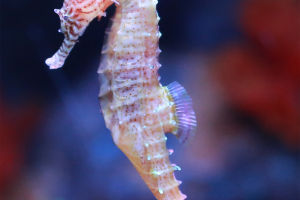The African ostrich is the largest bird in the world. Adult birds can reach 2.5 meters in height, and male ostriches can weigh up to 150 kilograms. The main feature is that the keel is underdeveloped and cannot fly. It is also the only two-toed bird among the extant birds in the world.
It has dangerous nails about 7 cm long on each big toe of its feet, and its hind legs are thick and powerful.
Living in the desert grasslands and savannah areas of Africa, it is widely raised in many countries because of its high economic value of feathers, skins and meat, fast growth, strong fecundity, convenient feeding and strong disease resistance.
Habits of ostriches.
Gregariousness.
Ostrich is a social animal and is a diurnal bird, which is more suitable for living in deserts or wasteland. Ostriches usually live in groups of 5 to 50 and get along with herbivores.
Habitat.
The habitat of ostriches varies from species to species. African ostriches usually live in deserts, grasslands and bushes.
The Somali species sometimes lives in dense thorns and bushes.
In South West Africa, some ostriches can sometimes be seen on steep rocks.
Food.
Ostrich is an omnivorous animal.
They mainly feed on the leaves, stems and fruits of plants, especially cucurbits, flowering shrubs, parasitic creepers, wild figs, etc. that grow on the ground.
The ostrich foraging is more efficient because its feet and body size are strong and can peck accurately.
Because the head must be lowered when pecking, it is more likely to be attacked by predators, so it is necessary to look left and right at all times.
Breeding method.
The mating method of ostriches is one male and many females. After nesting, several females will lay eggs in the same nest. On average, 10-12 eggs are laid per clutch, and the number of eggs per clutch can reach about 25 to 30.
Female ostriches generally lay their eggs during the day, while male ostriches incubate their eggs at night because their bright colors are not easy to spot at night.
Strong adaptability to climate environment.
The ostrich itself grows in the harsh environment of the African desert. In desert environments over 50 degrees, they can even go months without water.
Why do ostriches bury their heads in the sand?
1. Because the digestive function of ostrich is relatively poor, it will eat some sand to help digestion.
2. Sometimes bowing your head may just be looking for something to eat. From a distance, it is like burying your head in the sand.
3. The head and neck of the ostrich is close to the sand, and it can clearly hear the sound in the distance, which is conducive to avoiding danger in time, and can also relax the neck muscles, which is conducive to eliminating fatigue.
4. When the ostrich hatches, it will also bury its head on the ground to check the situation in time and prevent predators from coming to prey.
Ostrich, the largest flightless bird in the world.


